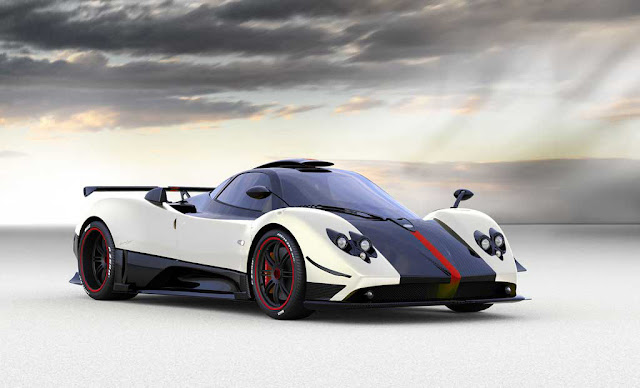Generally speaking the most satisfactory way to classify and categorise classic cars is by reference to the year in which they were manufactured. We have to start somewhere!Further classification must introduce a geographic component. The US probably represents the largest sector here, but the UK and other European countries contribute hugely to the rich tapestry that now constitutes the classic car world.Vintage cars are probably still best defined as those built before 1930. So that's a big part of the territory. Then come those built between 1930 and the end of World War 2 so, again a substantial sector. This era has been defined as the age of the "Post Vintage Thoroughbred". Not a bad label by any means.Once we get beyond World War 2 things become a little more subjective. In the UK there is the zero rate of road tax which applies to any car built before 1973. Somewhat confused because it defines a "build" date rather than a "registered" date, but that aside this sector is fairly easy to classify. So if it's not vintage, and it's not a Post Vintage Thoroughbred, but it was built before 1973, then it almost certainly is a "Road Tax Free, Classic".Coming further up to date there is definite confusion. There are classics being produced today, by small specialist manufacturers and even home build kit car fans. There are also the eccentric and bizarre that only their owners would ever define as classic.The first thing you should do is to find out what the car you are considering purchasing is presently selling for. You need to know the make, model, year, rather it has all original parts or not, and be able to accurately approximate its present condition. Next, you should check out the internet for the websites that specialize in providing the estimated value of the car you are considering obtaining. If the numbers work for you, then this is defiantly the easiest and safest way to drive away with the car of your dreams.The next avenue you can attempt to pursue when you are looking for a classic car; is to buy one that needs a great deal of work done to it in order to have it look like it is showroom new. This really is not as difficult as it seems, even for somebody that knows nothing about cars.Before you start this process though, it is recommended that you find a shop that specializes in rebuilding classic cars. Once that is done, you can start looking around for your new ride. The sales price to purchase one of these types of cars, is usually nothing compared to the work and cost required to get it fully restored.After you find a few that you are interested in, please be sure to take detailed pictures and videos of the car so that the shop you will be using can review them thoroughly. If you do your job, and get great shots of the car, they should be able to provide you a very accurate estimate.You are almost done now; simply add up the purchase price and the restoration estimate to get your total cost. Next, use the same types of websites we mentioned above to find out what a car like this is presently selling for. Once again, if your figures come out in your favor, you will soon be driving a new stunning classic car.
 |
| American Classic Car |
 |
| Aston Martin Classic Car |
 |
| Mercury Classic Car |
 |
| Red Classic Car |
 |
| BMW Classic Car |
 |
| BMW Classic Car |
 |
| Ferrari Classic Car |
 |
| Holden Classic Car |
 |
| Jaguar Classic Car |
Most of the classic car parts which one get from the market fall in the used category. One needs a great deal of effort to locate them, then make sure they will work with one's car, and finally to negotiate a decent price. Not all mechanics are familiar with classic car parts. There are specialized repair shops for such cars, and one should consult with them before purchasing any classic car part. Some of these parts could cost you a few thousand dollars. Remember, when you are getting your classic car repaired, all of its parts should be carefully stored. There are certain classic car parts, such as steering wheels or brakes, which were made to suit the needs of a different time period. These parts may still be functional, but might not be suitable for today's world.
And do not forget that classic cars did not come with safety devices, so there is always a chance that someone may steal a valuable car part off of your vintage car. You must take care of that before ordering a new part for your classic car. You can secure the parts of your classic car by speaking with an expert of your make and model.
Timescales
How much time can you devote to your restoration?
Cost
What is the estimated cost taking into account the timescales you have given yourself?
How much money do you have to restore your car?
How much work will you have to do yourself?
Road Tax
Is the car permanently off the road? If it is not of a certain age will you need to make the car SORN whilst carrying out the restoration?
Acquiring parts
To purchase parts for your vehicle maybe difficult as many parts become discontinued stock.
It maybe possible to replace the part with a modern alternative.
Second hand parts could be an option although if you can find the part you need it maybe in the same condition as the one you already have.
Where to find parts.
There are many ways to find parts if you are restoring on a shoe string.
Car parts suppliers.
Some modern suppliers may still have certain parts. Most parts after a certain period become discontinued, although there maybe a modern equivalent that is suitable although not authentic. You might even be lucky and there might be some old stock!
Specialist car suppliers maybe your next option as they specialise in classic cars.
Newspapers and newsagent windows
You never know what will be advertised. You may want to advertise a Wanted space yourself, but that can be costly. If you want to keep the costs down ask them for a late space advertisement. If they have spare spaces to fill and you can negotiate a better advertising rate.
Newsagents window are cheap and effective although localised. Keep a look out for adverts in your local newsagents for garage clearances, motor parts and vehicles for sale.
Car magazines
Car magazines can be costly but great for information. Have good look in the shop to make sure you have the right magazine to suit your car. Many of the magazines are now online and you may be able to find out details of specialist repairers and restorers free of charge.
Another cheap way of buying car magazines is to have a look at boot sales and local newspapers. It is amazing what information, books or manuals you can find for very little money.
Scrap yards
Get to know your local scrap dealer or car breaker. Tell them what you are looking for and they can contact you if anything suitable comes in.
Specialist car parts suppliers
Car Associations
Their members have been there and done it. You can find out details of associations in specialist classic car magazines and on the web.
They will be able to provide you useful advice. Possibly have access to parts and specialist repairers.
Car jumbles
Look out for car jumbles or classic car jumbles. They are always great to have a look round and you never know what useful part or tool you will be able to pick up.
Internet
The web is a fantastic source of information. The internet provides copies of manuals, reference books, association feedback, newsletters and forums as well as purchasing essential items such as parts, tools and specialist classic car insurance.
Insurance.
Some parameters and definitions are required and this leads to the first problem: what exactly is a classic car? And how do you begin to identify one? The answer is probably the old favourite that applies to all things of beauty and it is simply that it's all in the eye of the beholder.
One person's classic is another's heap of junk, but there's no doubt that we all know a true classic when we see one.
The earliest mechanically propelled vehicles are now, in the main, museum pieces that only rarely see the light of day. They are delicate relics of many a bygone age and evoke tremendous feelings of affection and attachment in those who love them.
Next are the classics that still represent a part of history long gone and comprise vehicles that can be nursed and nurtured by those who own, maintain and love them. Because of the dedication of these enthusiasts, the rest of us can enjoy the reward of exploring history, in much the same way as we would explore any part of the development of mankind through the ages.Coming more up to date are the vehicles that represent the boom years of motor car design and ingenuity, before computer aided design took over and resulted in what exists now, i.e. all cars looking pretty much the same. Modern needs and demands for fuel efficiency, together with environmental considerations dictate how cars are now configured.From modern techniques of design and manufacture we get cars that are incredibly efficient, but perhaps a little boring and unlikely to mature into what might be called classic cars in the future. Time alone will tell.Mechanical transportation has been around since the latter part of the nineteenth century so we have a wealth of history to draw upon.
































































